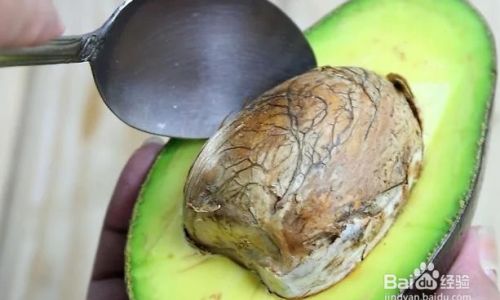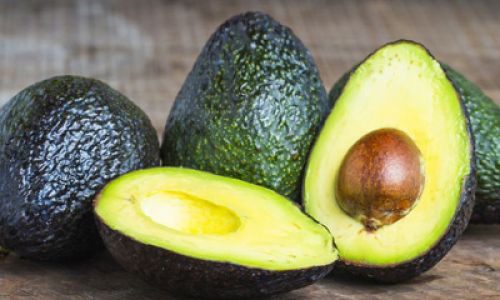Introduction
Avocados, often hailed as a superfood, are a rich source of healthy fats, vitamins, minerals, and antioxidants. Their creamy texture and buttery flavor make them a versatile ingredient in various cuisines worldwide. Whether you’re a health enthusiast, a culinary enthusiast, or someone simply looking to diversify your diet, learning how to eat avocados can significantly enhance your nutritional intake and culinary experiences. This comprehensive guide will walk you through the basics of selecting, preparing, and enjoying avocados in numerous delicious ways.
Section 1: Understanding Avocados
1 Types of Avocados
Avocados come in various types, each with its unique characteristics. The most common types include:
-
Hass Avocado: This is the most popular variety due to its creamy texture and rich flavor. It has a dark green to almost black pebbly skin when ripe.

-
Florida Avocado: Larger than Hass avocados, with a smoother, lighter green skin. They have a milder flavor and a slightly firmer texture.
-
Fuerte Avocado: Known for its long shelf life, this variety has a large size and green skin that turns dark when ripe. Its flesh is firm and has a nutty flavor.
-
Bacon Avocado: Smaller and rounder, with a thin, smooth skin. It has a buttery texture and a rich, slightly sweet flavor.
2 Nutritional Benefits
Avocados are packed with nutrients that offer numerous health benefits:
-
Healthy Fats: Avocados are rich in monounsaturated and polyunsaturated fats, which help lower bad cholesterol levels and reduce the risk of heart disease.
-
Fiber: High fiber content aids in digestion and helps maintain a healthy weight by keeping you feeling full longer.
-
Vitamins and Minerals: They contain vitamins A, C, E, K, B vitamins, potassium, copper, iron, and magnesium, contributing to overall health and well-being.
-
Antioxidants: Avocados are rich in lutein and zeaxanthin, antioxidants that support eye health, and tocopherols, which protect against oxidative stress.
Section 2: Selecting and Storing Avocados
1 How to Choose Ripe Avocados
Selecting ripe avocados involves checking a few key factors:
-
Skin Color: For Hass avocados, look for dark green to almost black skin with a slight give when pressed. Florida avocados should have a uniform green color.
-
Firmness: Gently press the fruit with your thumb. It should yield slightly but not feel overly soft or mushy.
-
Stem: Remove the small stem at the top. If it comes off easily and the underlying area is green, the avocado is ripe. If it’s brown, the avocado may be overripe.
2 Storing Avocados
Proper storage can extend the shelf life of avocados:
-
Unripe Avocados: Store them in a paper bag at room temperature. The ethylene gas they produce will accelerate ripening.

-
Ripe Avocados: Refrigerate ripe avocados to slow down ripening. They can last up to a week in the fridge.
-
Cut Avocados: Store leftover avocado flesh in an airtight container with lemon or lime juice to prevent browning. Keep it in the fridge for up to two days.
Section 3: Preparing Avocados
1 Cutting and Peeling
Cutting and peeling an avocado correctly ensures minimal waste and maximum enjoyment:
- Hold the avocado steady with one hand.
- Cut it lengthwise around the pit with a sharp knife.
- Twist the halves in opposite directions to separate them.
- Remove the pit by gently hitting it with the knife blade and twisting it out.
- Use a spoon to scoop out the flesh from the skin.
2 De-seeding Techniques
Removing the pit can be tricky, but here are some effective methods:
-
Knife Technique: Place the knife blade into the pit and twist gently to lift it out.
-
Spoon Technique: Scoop under the pit with a spoon and lift it out.
-
Scoop and Smash: For guacamole, simply scoop out the flesh around the pit, then press the pit into the bowl to push out any remaining flesh. Discard the pit.
Section 4: Enjoying Avocados in Various Ways
1 Raw Consumption
Avocados are delicious on their own or as part of a meal:
-
Avocado Slices: Serve slices with a sprinkle of salt, pepper, and a squeeze of lemon or lime juice.
-
Guacamole: Mash avocado flesh with onions, tomatoes, cilantro, garlic, salt, pepper, and lime juice for a classic dip.
-
Avocado Toast: Spread mashed avocado on whole-grain toast. Add toppings like cherry tomatoes, radish slices, arugula, or a sprinkle of red pepper flakes.
2 Incorporating into Meals
Avocados can elevate the taste and nutritional value of various dishes:

-
Salads: Add diced or sliced avocados to green salads, grain salads, or pasta salads for a creamy texture and nutritious boost.
-
Sandwiches and Wraps: Use avocado slices or mashed avocado as a spread in place of mayonnaise or butter.
-
Sushi: Avocado rolls (e.g., California rolls) are a popular sushi variation. Slice ripe avocados thinly and use them as a filling.
-
Soups and Stews: Puree avocado with some soup broth to create a creamy texture without dairy. This works well with tomato-based soups, gazpacho, and creamy vegetable stews.
3 Baking and Cooking
Avocados can be baked, grilled, or sautéed to create unique flavors:
-
Avocado Fries: Slice ripe avocados into strips, coat with breadcrumbs or a flour mixture, and bake or fry until crispy. Serve with a dipping sauce like sour cream or guacamole.
-
Stuffed Avocados: Hollow out avocado halves, fill them with a mixture of meat (like chicken or shrimp), rice, beans, and spices, and bake until heated through.
-
Grilled Avocado: Slice avocados and brush with olive oil. Grill until they have a nice char and serve with a squeeze of lime and a sprinkle of salt and pepper.
-
Avocado Smoothies: Blend ripe avocado with milk, yogurt, or a plant-based milk alternative, along with frozen fruit, honey, and a scoop of protein powder for a creamy, nutritious smoothie.
4 Desserts and Snacks
Avocados can even be incorporated into sweet dishes:
-
Avocado Chocolate Mousse: Blend ripe avocado with cocoa powder, maple syrup, vanilla extract, and a bit of milk or coconut cream for a decadent, healthy dessert.
-
Avocado Ice Cream: Use a similar blend to mousse but freeze it in an ice cream maker for a creamy, dairy-free treat.
-
Avocado Brownies: Replace some of the butter or oil in brownie recipes with mashed avocado for a moist, nutritious twist.
Conclusion
Avocados are a versatile, nutritious food that can be enjoyed in countless ways. From simple preparations like avocado toast and guacamole to more complex dishes like stuffed avocados and avocado chocolate mousse, the possibilities are endless. By understanding how to select, store, and prepare avocados, you can incorporate this superfood into your diet in ways that suit your taste preferences and nutritional needs. Whether you’re looking to boost your intake of healthy fats, fiber, or antioxidants, or simply want to enjoy a delicious and creamy treat, avocados are an excellent choice. Happy eating!






0 comments